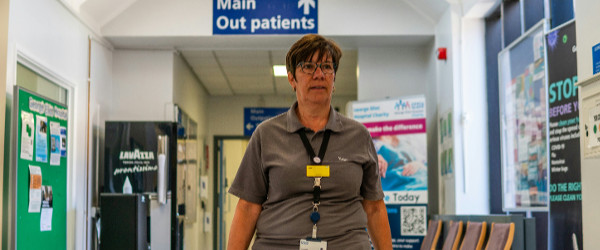In the second part of our three-part blog series, we are taking a closer look at the role provincial and territorial governments play in healthcare. Spoiler alert, it is a big one!
Although the federal government helps fund healthcare and guide policies, provinces and territories are in charge of delivering healthcare services. For example, they are responsible for making sure everyone has access to a family doctor, setting breast cancer screening guidelines, and funding breast cancer treatments.
Below are four key areas where provincial and territorial governments play a major role, and how you can advocate to the province for better healthcare. These four areas are by no means everything the provincial and territorial governments are responsible for, but rather just a sample of some key areas relevant for people with breast cancer.
Primary Care
Canada’s publicly funded healthcare system is often described as “universal”. While this is mostly true, it works this way because provinces and territories have agreed to follow the Canada Health Act. The difference is subtle, but it helps explain why each province and territory is in charge of providing primary care services to residents.
Primary care is the foundation of our healthcare system and is often the first point of contact for patients. The Canadian Institute for Health Information explains that primary care is usually delivered by a nurse practitioner, family doctor, or general practitioner. Other professionals like dietitians, physiotherapists, and social workers may also be part of a care team. Primary care providers are often the people we turn to when we are worried about our health. If we find a lump, want early screening because of a family history, or experience a new symptom after breast cancer treatment, they are the people we reach out to first.
Even though it is essential, access to primary care remains a challenge. It is estimated that 1 in 5 Canadians do not have a family doctor. Although this is a national issue, provincial and territorial governments are responsible for making sure there are enough family doctors or care teams available.
Hospital Care
It is hard to imagine healthcare without hospitals. From surgeries and emergency care to cancer treatments and more, hospitals are a central part of our healthcare system. When you are going through breast cancer treatment, the hospital where you have your surgery and the cancer centre where you meet with your medical oncologist or receive chemotherapy play a major role in your care. Just like primary care, hospitals are the responsibility of the provincial or territorial governments.
Hospitals can also raise money through donations, but most of their funding comes from the province or territory, and they remain accountable to the government that funds them. Decisions about what services are available at your hospital are made at the provincial or territorial level.
Breast Cancer Screening Guidelines
Have you ever noticed that breast cancer screening guidelines can be different depending on where you live? That’s because each province and territory sets their own screening guidelines. While these decisions are often based on similar evidence and federal recommendations, the final decisions on when and how to screen for breast cancer rests with each province or territory.
In addition, provinces manage wait lists for screening programs. To learn more about wait times, check out our blog post on Navigating Physician Wait Times in Canada During Breast Cancer Treatment. Because provinces run the actual screening programs, they are responsible for making sure everyone receives timely and appropriate access to this preventative service.
Drug Funding
The process of getting a drug publicly funded in Canada is complex and lengthy. It has many steps, and it is not always straightforward, or fully transparent. In the simplest terms, once a drug is approved for sale by Health Canada, it will typically be reviewed for cost-effectiveness and price negotiations.
The final decision about whether to fund a treatment is made by each province or territory. This means a breast cancer treatment may be available for sale in Canada but still not covered in some parts of the country. Unfortunately, this does happen. It is an issue that has been recognized by several Premiers, and some are beginning to take action. It is another clear example of how crucial the provincial role is in healthcare access and equity.
To see a list of contact information for your provincial or territorial formulary, click here, or check out our MedSearch tool to find what treatments are covered in your province or territory.
Advocating to Your Provincial or Territorial Government
When healthcare issues arise, especially ones that affect access, coverage, or quality of care, your province or territory is often the right place to direct your concerns. While it may seem daunting for some, reaching out to your Premier or provincial Minister of Health is one of the most direct ways to advocate for change. Whether you are worried about a lack of family doctors in your area, the services offered at your local hospital, or funding for your breast cancer treatment, these are the right people to contact.
You can also connect with your local Member of Provincial Parliament (MPP) or Member of the Legislative Assembly (MLA) and ask them to be your advocacy partner. Since each province and territory has their own MPPs or MLAs, a Google search is the best way to find more information about how to contact your provincial member of parliament.
Finally, if you believe you have been treated unfairly or need your case reviewed, you can connect with a patient ombudsman. They can help review complaints or specific issues you may have experienced. To find out how to contact your patient ombudsman, click here.
Why This Matters
Sharing your experience as a patient or caregiver can go a long way in shaping more responsive and fair healthcare policies. Knowing who to contact is a critical first step in advocacy. No matter what you are speaking up about, reaching out to the correct decision-maker improves the chance your voice will be heard — and acted on.
Have a story to tell? Use our Digital Advocacy and Storytelling Toolkit to get started.









